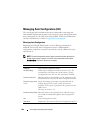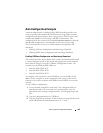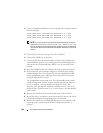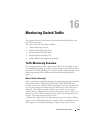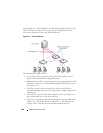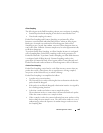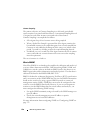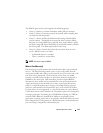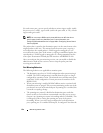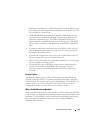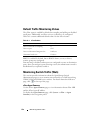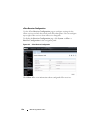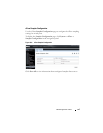
410 Monitoring Switch Traffic
Counter Sampling
The primary objective of Counter Sampling is to efficiently, periodically
export counters associated with Data Sources. A maximum Sampling Interval
is assigned to each sFlow instance associated with a Data Source.
Counter Sampling is accomplished as follows:
• sFlow Agents keep a list of counter sources being sampled.
• When a Packet Flow Sample is generated the sFlow Agent examines the
list and adds counters to the sample datagram, least recently sampled first.
Counters are only added to the datagram if the sources are within a short
period, 5 seconds say, of failing to meet the required Sampling Interval.
• Periodically, say every second, the sFlow Agent examines the list of counter
sources and sends any counters that must be sent to meet the sampling
interval requirement.
The set of counters is a fixed set.
What is RMON?
Like sFlow, RMON is a technology that enables the collection and analysis of
a variety of data about network traffic. Dell Networking N2000, N3000, and
N4000 series switches software includes an RMON probe (also known as an
RMON agent) that collect information and analyze packets. The data that is
collected is defined in the RMON MIB, RFC 2819.
RMON is defined in an Internet Engineering Task Force (IETF) specification
and is an extension of the SNMP MIB. You can view the RMON information
locally on the switch or by using a generic RMON console on a network
management station (NMS). SNMP does not need to be configured on the
switch to view the RMON data locally. However, if you use a management
station to view the RMON data that the switch collects and analyzes, you
must configure the following SNMP settings:
• Set up the SNMP community string to be used by the SNMP manager at a
given IP address.
• Specify the network management system IP address or permit
management access from all IP addresses.
For more information about configuring SNMP, see "Configuring SNMP" on
page 323.



